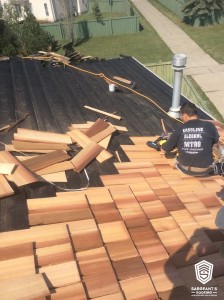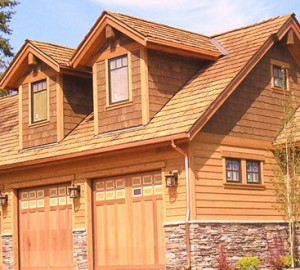When It Comes Time To Replace Your Roof, Can You Roof Over Your Existing Roof Or Does It Need To Be Removed?
There are a number of factors you’ll need to consider when it’s time to replace your roof, and in our last blog, we went over several questions to ask yourself before installing a new roof on your home. One of the most important things to consider is if your existing roof will need to be removed or not. This can affect everything from the price to the quality of your roof.
What Are The Benefits Of Roofing Over Your Existing Roof?
 Save money – It takes time and hard work to remove your existing roof, and you’ll probably also have to pay a dump fee. Roofing over your existing roof will help you save on these additional expenses.
Save money – It takes time and hard work to remove your existing roof, and you’ll probably also have to pay a dump fee. Roofing over your existing roof will help you save on these additional expenses.- Faster roof replacement – Removing your existing roof is an additional step, and it can take additional time. If you are looking to save more time on your roof replacement, roofing over your existing shingles is the way to go.
- Still maintains appearance, warranty and lifespan – Roofing over your existing shingles is faster and more affordable than removing them, and many people are worried that the roof won’t be as high quality or will last as long. However, as long as you choose the right contractor, roofing over your existing roof can give you the same appearance and lifespan, and it will have the same manufacturer’s warranty, as if you removed the roof first.
- May provide added protection from the elements – As long as the existing roof is still good quality, adding another layer on top of it can provide further protection during storms. For example, if the new shingles get blown off or damaged in a storm, your roof will still be protected by the existing shingles.

How Do You Know If Roofing Over Your Old Roof Or Replacing It Is Right For You?
 As you can see, there are a number of benefits that comes with roofing over your existing shingles, but it’s not ideal in every case. Here are a few signs that roofing over your existing roof is not the right option:
As you can see, there are a number of benefits that comes with roofing over your existing shingles, but it’s not ideal in every case. Here are a few signs that roofing over your existing roof is not the right option:
- You already have two or more layers of shingles on your roof – In most places, building codes don’t allow more than two layers of roofing materials, and in that case, the decision to roof over your roof or remove it will be made for you. Check the building codes in your area to learn the requirements for your roof.
- Your roof feels spongy or soft – When you walk on your roof, does it feel spongy or soft? If so, this is a sign that your roof’s underlying sheathing has some problems. The only way to address this is by getting rid of the existing roof.
- Your shingles aren’t in good shape – In order for your new roof to properly protect your home, it needs to lie flat over your existing roof. If your shingles are curling, buckling or otherwise damaged, this makes it impossible.
- Your roof leaks – Have you noticed wet spots on your ceiling or other signs of roof leaks after it rains? If so, you’d be better off replacing your roof than adding shingles onto a leaky roof. Chances are, adding a new layer to your roof won’t fix the leaks, and it will make it more difficult for your contractor to repair them if you roof over them.
- Your roof can’t support the weight – Did you know that your average 2,000 square foot roof weighs approximately 5,000 pounds? Before you decide to roof over your roof, ask a contractor if your roof’s frame is strong enough to support the weight.
Whether you want to remove your existing roof or roof over it, turn to Sargeant’s Roofing. Schedule your appointment today.
